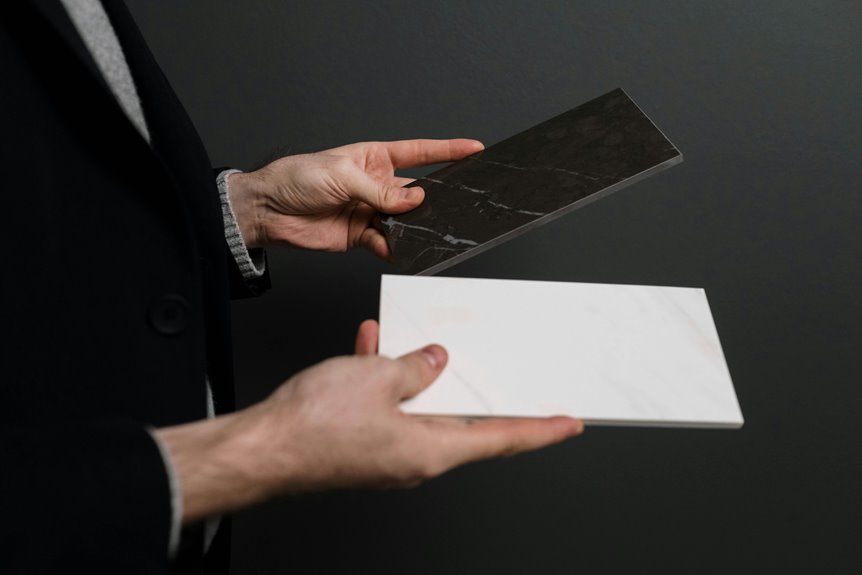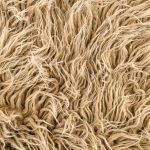You might think all synthetic fabrics perform similarly when it comes to breathability, but lyocell stands apart in several key ways. If you’ve ever felt sticky or overheated in polyester, you’ll want to understand why lyocell often feels cooler and drier against your skin. The difference comes down to how these fibers handle moisture and airflow—details that could change how you choose your next garment.
Table of Contents
Key Takeaways
- Lyocell fibers have a breathable weave that allows higher airflow compared to polyester’s less porous structure.
- Lyocell quickly wicks moisture and dries faster, enhancing breathability and comfort.
- Polyester retains moisture, reducing breathability and often requires chemical treatments for odor control.
- Natural odor resistance in lyocell further contributes to a fresher feel during wear.
- Overall, lyocell’s breathability surpasses polyester, making it better for moisture management and skin comfort.
Understanding the Material Composition of Lyocell and Polyester
To understand how lyocell and polyester differ in breathability, you need to look at what they’re made of.
Lyocell originates from natural wood pulp, mainly eucalyptus, processed through an eco-friendly production process that dissolves the pulp into a solvent before spinning it into fibers. This gives lyocell its biodegradable and breathable qualities.
Lyocell, made from eucalyptus wood pulp, is eco-friendly, biodegradable, and naturally breathable due to its unique production process.
Polyester, on the other hand, is a synthetic fiber derived from petrochemicals. Its production process involves polymerizing petroleum-based compounds, resulting in a durable but less porous fiber.
Knowing these fiber origins and production processes helps you grasp why lyocell feels softer and more breathable, while polyester offers strength and moisture resistance.
Understanding composition lays the groundwork for comparing their functional properties in breathability and comfort.
Breathability and Moisture Management Comparison
Although both lyocell and polyester serve as popular fabric choices, they handle breathability and moisture quite differently. Lyocell excels in moisture retention and airflow efficiency, drawing moisture away from your skin and allowing it to evaporate quickly. Polyester, while durable, tends to trap moisture, reducing breathability. Here’s a quick comparison:
| Feature | Lyocell | Polyester |
|---|---|---|
| Moisture Retention | Low (quick drying) | High (holds moisture) |
| Airflow Efficiency | High (breathable weave) | Moderate (less porous) |
| Odor Resistance | Natural resistance | Often treated |
| Drying Time | Fast | Slower |
| Suitable Activities | Activewear, casual | Sportswear, outerwear |
Choosing lyocell means better moisture management and airflow efficiency for comfort throughout the day.
Comfort and Skin Feel Differences Between the Fabrics
Understanding how lyocell and polyester handle moisture gives you insight into their overall comfort, but how they feel against your skin is just as important.
Lyocell stands out with its naturally high softness levels, offering a smooth, gentle touch that’s less likely to cause skin irritation. If you have sensitive skin, you’ll appreciate lyocell’s breathable, moisture-wicking nature that helps keep you comfortable all day.
Polyester, while durable, tends to feel less soft and can trap heat and moisture, which might increase the risk of skin irritation, especially during extended wear.
You might find polyester fabrics a bit rougher or less pleasant against your skin compared to lyocell. Ultimately, if comfort and minimizing skin irritation matter to you, lyocell usually offers a superior feel.
Durability and Care Considerations for Lyocell and Polyester
While lyocell offers impressive softness and breathability, you might wonder how it holds up over time compared to polyester. When considering durability, polyester generally outperforms lyocell due to its synthetic nature, resisting wear and tear better.
However, lyocell still offers decent longevity if you follow proper care instructions. You’ll want to wash lyocell in cold water and avoid high heat drying to prevent shrinkage or weakening fibers.
Polyester, on the other hand, is more forgiving—you can machine wash and dry it without much worry. In a longevity comparison, polyester tends to last longer with less maintenance, but lyocell’s comfort and breathability might outweigh its slightly shorter lifespan for you.
Ultimately, your choice depends on balancing durability with care preferences.
Environmental Impact and Sustainability Factors of Both Fibers
Choosing between lyocell and polyester means not just weighing comfort and durability but also considering how each fiber impacts the environment.
Lyocell stands out because it comes from sustainably harvested wood pulp and uses a closed-loop process that recycles water and solvents, minimizing waste. This sustainable production reduces environmental strain considerably.
On the other hand, polyester is a synthetic fiber derived from petroleum, making its production energy-intensive and reliant on fossil fuels. However, polyester’s recycling potential is high—you can find recycled polyester made from plastic bottles, which helps divert waste from landfills.
When you pick lyocell, you support renewable resources and eco-friendly manufacturing. Choosing recycled polyester also promotes circularity.
Frequently Asked Questions
Can Lyocell Be Blended With Polyester for Enhanced Fabric Properties?
You can blend lyocell with polyester to combine lyocell properties like breathability and softness with polyester benefits such as durability and wrinkle resistance, creating a fabric that’s comfortable, strong, and easier to care for.
How Does the Color Retention of Lyocell Compare to Polyester?
You’ll notice better colorfastness comparison with polyester, resisting fading longer; you’ll find lyocell excels in dye absorption, offering vibrant shades initially but fades faster. You’ll appreciate both, depending on your color retention needs.
Are There Any Differences in Wrinkle Resistance Between Lyocell and Polyester?
You’ll notice polyester has better wrinkle resistance and fabric durability than lyocell, which wrinkles more easily. So, if you want low-maintenance, wrinkle-free clothes, polyester’s your best bet for lasting wear and fewer creases.
What Are the Typical Price Ranges for Lyocell Versus Polyester Fabrics?
You’ll find lyocell pricing generally higher due to eco-friendly production, ranging from $10 to $30 per yard. Polyester costs are usually lower, around $2 to $10 per yard, making it a more budget-friendly option.
Which Fabric Is Better Suited for Athletic Wear, Lyocell or Polyester?
Wondering which fabric suits your workouts better? You’ll find polyester excels in moisture management and stretch capability, keeping you dry and flexible. Lyocell feels softer but isn’t quite as durable or quick-drying for athletic wear.
- Recycling Nonwoven Fabrics: Is It Possible? - July 11, 2025
- Recycling Nonwoven Fabrics: Is It Possible? - July 11, 2025
- Recycling Nonwoven Fabrics: Is It Possible? - July 11, 2025





